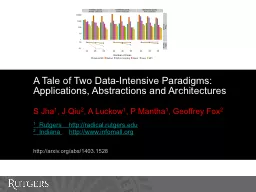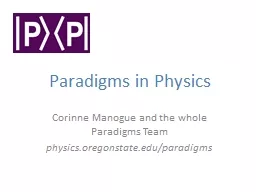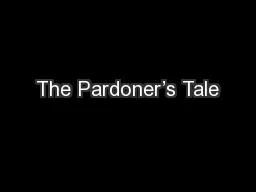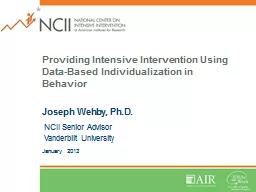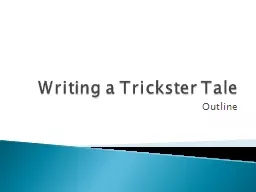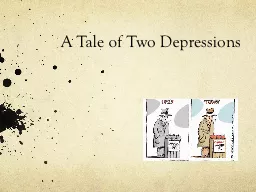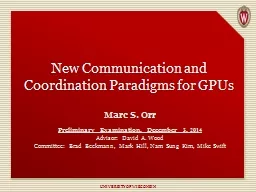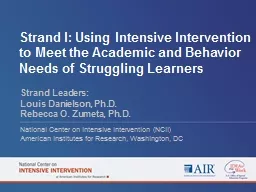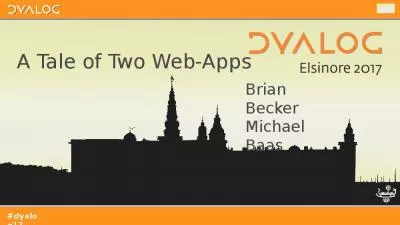PPT-A Tale of Two Data-Intensive Paradigms: Applications, Abstr
Author : test | Published Date : 2018-01-12
S Jha 1 J Qiu 2 A Luckow 1 P Mantha 1 Geoffrey Fox 2 1 Rutgers httpradicalrutgersedu 2 Indiana http wwwinfomallorg http arxivorg abs14031528
Presentation Embed Code
Download Presentation
Download Presentation The PPT/PDF document "A Tale of Two Data-Intensive Paradigms: ..." is the property of its rightful owner. Permission is granted to download and print the materials on this website for personal, non-commercial use only, and to display it on your personal computer provided you do not modify the materials and that you retain all copyright notices contained in the materials. By downloading content from our website, you accept the terms of this agreement.
A Tale of Two Data-Intensive Paradigms: Applications, Abstr: Transcript
Download Rules Of Document
"A Tale of Two Data-Intensive Paradigms: Applications, Abstr"The content belongs to its owner. You may download and print it for personal use, without modification, and keep all copyright notices. By downloading, you agree to these terms.
Related Documents

